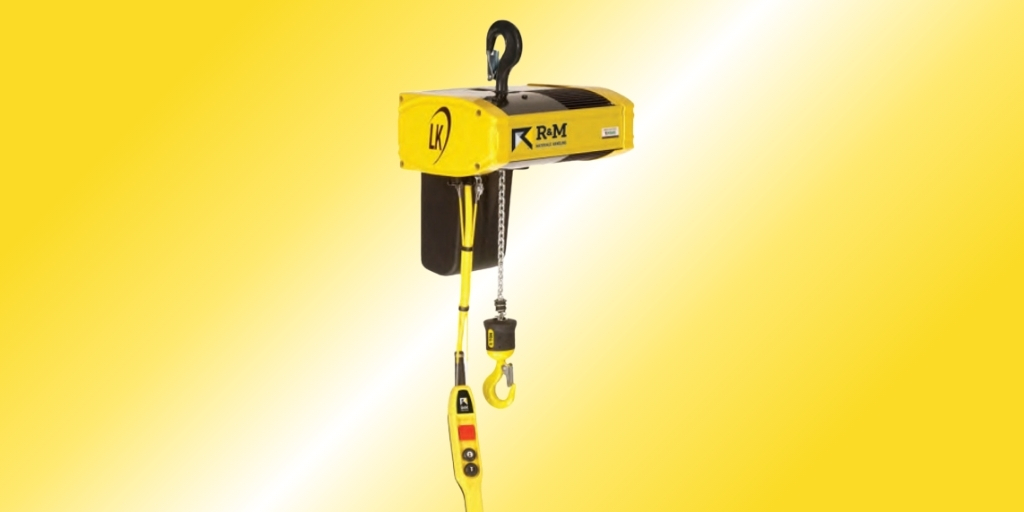
Understanding whether a single-chain or double-chain electric chain hoist best suits your operation is key to ensuring safe, efficient, and long-lasting lifting performance. Each configuration presents distinct mechanical and operational characteristics. The choice depends on your load requirements, lifting environment, and long-term maintenance needs.
How Does an Electric Chain Hoist Work?
Basic Mechanism
An electric chain hoist uses a motor-driven gearbox and chain to lift loads vertically. The industry-leading models, such as R&M’s LK series, feature rugged, compact designs, ergonomic pushbutton controls, self-adjusting brakes, and plug-and-play electrical components for hassle-free service and longevity.
Single vs Double Chain Configuration
Single-chain hoists rely on one chain loop, offering compactness and simplicity. In contrast, double-chain models use two chains for added stability and smoother lifting, ideal for heavier or more precise applications.
Key Differences: Single vs Double Chain Hoist
Load Capacity & Lift Height
Double-chain hoists provide increased load capacity and enhanced stability, making them suitable for demanding industrial environments, especially when lifting heavy objects over significant heights. Single-chain hoists, on the other hand, are typically more compact and better for lighter, more general-duty applications.
Speed, Precision & Duty Cycle
Certain models, like those offered by Hoists Protech, feature variable-speed electric chain hoists, enabling controlled acceleration and deceleration. These hoists are available in both single- and double-chain designs, with production models offering dual-speed performance for precise positioning needs.
Maintenance & Durability
Robust designs like the R&M LK hoists include permanently lubricated gearboxes and self-adjusting brakes, reducing maintenance requirements over time. Double-chain setups distribute load stress more evenly, promoting longevity and reducing the frequency of alignment or wear issues.
Which Electric Chain Hoist Should You Choose?
Best Use Cases for Each Configuration
| Configuration | Ideal Applications |
| Single–chain | Compact environments, moderate loads, limited headroom, general usage |
| Double–chain | Heavy-duty lifting, high lift heights, rigorous cycles, greater precision |
Hoists Protech supports these choices with expert guidance and offers a wide range of models—including Kito and R&M—to match your operational needs precisely.
Cost, Installation & Practical Considerations
Single-chain hoists are often more cost-effective and easier to install. Double-chain systems offer superior load management and stability but may require more robust mounting infrastructure and higher initial investment. Both types are available with variable-frequency drives and compatible with motorized trolleys for seamless integration into existing cranes or gantry systems.
Choosing the Right Electric Chain Hoist for Your Operation
Selecting between a single- or double-chain electric chain hoist means balancing capacity, precision, installation constraints, and maintenance ease. Single-chain systems are ideal for lighter, general-purpose lifting—especially in tighter spaces—while double-chain hoists excel in demanding, heavy-duty conditions.
At Hoists Protech, we offer a full range of electric chain hoists—single and double-chain, single- or three-phase, variable-speed, and tailored to your application. Our expert teams ensure CSA/CWB-certified quality and seamless integration.
Need help specifying the right hoist? Contact us for a personalized consultation and quote—your operation deserves the best lift, safely and efficiently.
